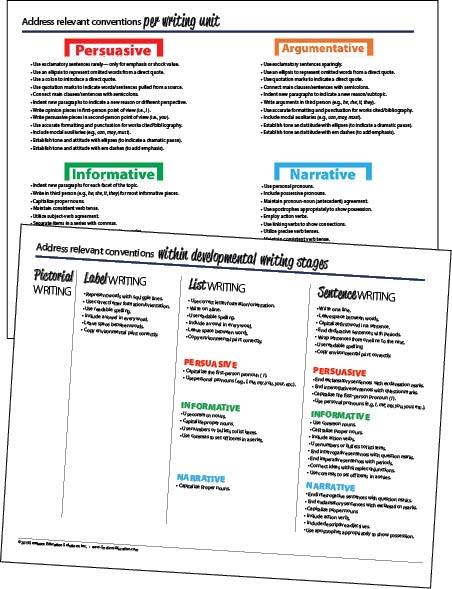Learning Center
Target grammar skills within writing units
When moving through your ELA curriculum, be purposeful when determining which convention skill to teach when.
Recognize that the order that skills appear in the language book is tied to categorization (e.g., parts of speech, types of sentences, etc.). There is nothing wrong with this organization, but don’t feel compelled to teach grammar and mechanics in that order.
Rather, in order to truly teach conventions in context, target those that are most relevant within each writing unit. Depending on the genre of the writing, developmental stage, or step in the writing process, different convention skills become more (or less) relevant.
Consider genre-specific skills
For example, narrative writing units focus on individuals solving problems. While developing those plots, there will be several opportunities to reference characters and the conventions that surround them. Depending on your grade-level standards, you might target one of these skills:
- Character names with proper noun capitals.
- Character dialogue with quotation marks, commas, and speech tags.
- Character possession with apostrophes.
- Character reference with a mixture of nouns and pronouns.
Informative writing often reveals facts, stats, quotes, vocabulary, and evidence within longer sentences. Depending on how the information is related, this is a great opportunity to teach middle-of-the-sentence punctuation. Again, depending on grade-level expectations, you might teach one of these lessons:
- Commas separating items in a series.
- Commas to show the relationship between two separate ideas (i.e., compound sentences using conjunctions–and… or… but…).
- Semicolons to show the tight connection between two statements.
- Commas to insert specific details using prepositional phrases, appositives, etc.
 Identify relevant skills per unit
Identify relevant skills per unit
To determine which skills are most relevant, study the anchor papers and other mentor text that kick off a new writing unit. Identify the grade-appropriate grammar and mechanic skills that appear abundantly within these samples. These are the very skills to then teach students how to integrate into their own pieces. (NOTE: This strategy also helps ensure that grammar instruction is not an isolated lesson.)
Download a suggested list of convention skills tied to the various writing modes and developmental stages.
Although all grammar and mechanic skills could be found in every writing genre, the secret is to teach the skill in a writing experience where it is most commonly integrated. This allows students immediate and abundant practice with that new skill. Then, as the school year progresses and the units change, revisit convention skills and how the tools and rules are applied in various genres. This strategy develops a deeper understanding of the skill and moves students toward mastery.






